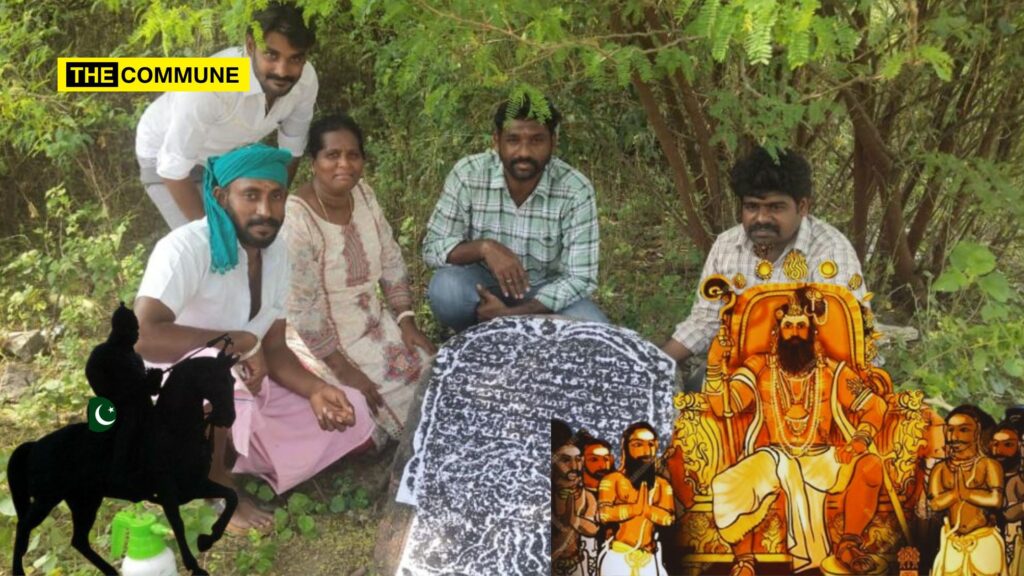A 600-year-old inscription dating back to the Pandya period has been uncovered, shedding light on the shelter provided to those affected by the invasion of Malik Gafur then.
The discovery was made during a survey led by Devi Arivu Selvam, Kathiresan, Tamil Dasan, Kallanai Sundaram, and others from the Madurai Natural Heritage Trust at Palkudi, located at the foot of the Aruvimalai in Kachirayanpatti panchayat near Kottampatti. The inscription, featuring Tamil characters, was found on a large stone slab measuring four feet in height and three feet in width. Udayakumar and Muthupandi from the Pandya Nadu Centre for Historical Research later copied the inscription, with archaeologist Shanthalingam providing an analysis of its contents.
According to Devi Arivu Selvam from the Madurai Natural Heritage Trust, the inscription includes a carving of a complete Kumbha, one of the Ashtamangalam symbols, at the bottom. The text records the reign of Sundara Pandiyan, who ruled in the 14th century and was responsible for the invasion of Malik Kafur in Madurai, which was part of the Pandya country.
The inscription is dated to the 12th day of the month of Vaikasi in the seventh year of the king’s reign. It references a significant rebellion that occurred during this period. At the time, the chief of the small state in the Melur region was Deiva Shilai Peruman, also known as Veera Parakrama Singhadevan. The inscription notes that Veera Parakrama Singhadevan provided shelter to the Duru kanmiyar, from Surabi Nadu, an area encompassing present-day Thirujunai, Karungalakudi, and Aruvi Malai.
This sheltering act is attributed to those affected by the Turkish invasion. Interestingly, the village now known as Palkudi is referred to as Pakudi in the inscription on Aruzhi Hill. Additionally, Peruman Veera Parakrama Singhadevan is mentioned in another inscription on Aruvi Hill, further linking these historical events.
This inscription stands out as a unique source of information on the historical events in Madurai during the 14th century. The area around the discovery site also holds other archaeological treasures, including stone shelters from the Iron Age and Paleolithic period, an ancient Vinayagar temple, stone beds, red sandalwood, paintings, and remnants of a 13th-century Shiva temple on Aruvi Hill.
This inscription is categorized as an Asiriyam type, which typically details the protection granted to a group of people and features the symbol of a Poorna Kumbha. In this specific case, the inscription records how Veera Parakrama Singadevan offered shelter and security to those who sought refuge from the brutalities inflicted by the Sultanate forces during Malik Kafur’s invasion of Madurai. It serves as a poignant testament to the suffering endured by the people during the violent period of the Sultanate’s invasion.
(With inputs from Kamadenu)
Subscribe to our channels on Telegram, WhatsApp, and Instagram and get the best stories of the day delivered to you personally.

